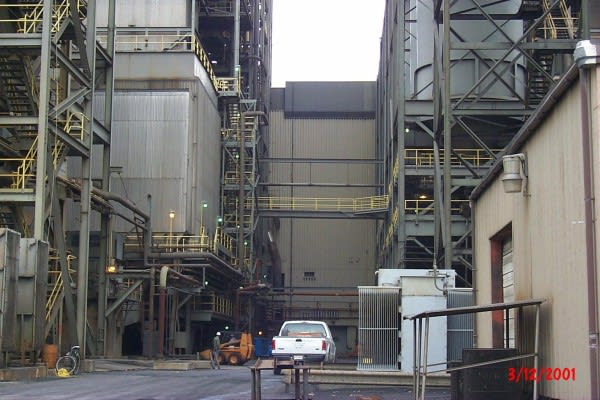KingKongdoor
Structural
I'm designing a pipe bridge to span from a tank farm platform to a process building. Wanted to see you guys thoughts on a sliding connection with teflon bearing pads.
Info...
The bridge is two truss members built up with double angles and braced together. Top chord bearing
Bridge span ~50ft
Tie-in Height at building and tank farm pipe structure ~40ft
Tank farm platform is not attached to tanks other than the process piping.
Process building is approx 60ft tall with a ~120'x90' footprint, steel moment frames with a ~30'x15' grid(I would prefer a smaller column spacing but not my call)
The building is fully enclosed
My concern is differential movement between the tank farm structure and the process building. Based on preliminary analysis I could have 2" of movement between the two structures at the bridge height during a wind event(120mph).
My gut says the bridge will be fine no matter the connection and the tank farm structure is flexible enough at that height to take the movement. I can calculate and design for the axial load that could be applied to the bridge and structures.
I however plan on designing the bridge to have a pin connection at one end and a sliding connection at the other end with teflon bearing pads. I will then determine how large of an axial load would start causing a problem in case of a sliding connection failure or a movement worst than the results of my analysis. I would go heavier on the steel if needed. I prefer not to have a sliding connection on each end.
Does this sound reasonable to you guys or am I overthinking the problem?
Info...
The bridge is two truss members built up with double angles and braced together. Top chord bearing
Bridge span ~50ft
Tie-in Height at building and tank farm pipe structure ~40ft
Tank farm platform is not attached to tanks other than the process piping.
Process building is approx 60ft tall with a ~120'x90' footprint, steel moment frames with a ~30'x15' grid(I would prefer a smaller column spacing but not my call)
The building is fully enclosed
My concern is differential movement between the tank farm structure and the process building. Based on preliminary analysis I could have 2" of movement between the two structures at the bridge height during a wind event(120mph).
My gut says the bridge will be fine no matter the connection and the tank farm structure is flexible enough at that height to take the movement. I can calculate and design for the axial load that could be applied to the bridge and structures.
I however plan on designing the bridge to have a pin connection at one end and a sliding connection at the other end with teflon bearing pads. I will then determine how large of an axial load would start causing a problem in case of a sliding connection failure or a movement worst than the results of my analysis. I would go heavier on the steel if needed. I prefer not to have a sliding connection on each end.
Does this sound reasonable to you guys or am I overthinking the problem?


![[idea] [idea] [idea]](/data/assets/smilies/idea.gif)